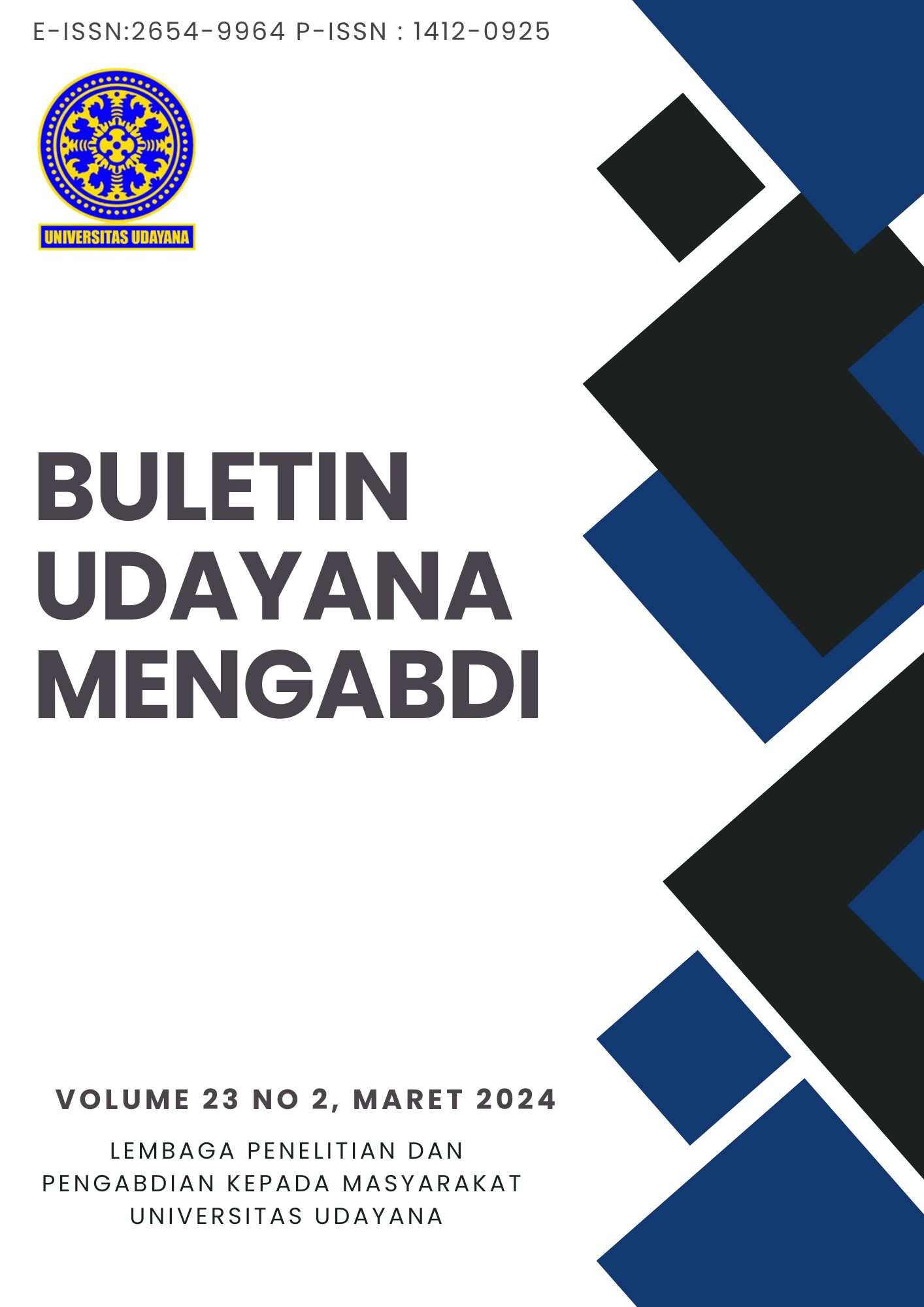PEMBERDAYAAN KADER POSYANDU UNTUK MENURUNKAN ANGKA KEJADIAN STUNTING
Abstract
Stunting is a condition of failure to thrive in children below 5 years old because of chronic nutritional depletion, which resulted in the posture that too short for the age. To date, stunting still become one of the important health problems in Indonesia. Although the data from Riskesdas have shown that there was decrease in the stunting rate from 37.2% in 2013 to 30,8% in 2018, but prevention measures still need to be socialized. In Bali, stunting prevalence in 2018 was 21.9%. In the scope of Puskesmas Sukawati II, there is 49 cases of stunting (2.23%). Ten cadre of posyandu in Banjar Kederi, Silakarang and Samu, Singapadu Kaler Village, Gianyar Regency were included in this community service. The aim of this community service was to increase the posyandu cadre`s knowledge about stunting prevention, including the techniques of processing foods to maintain its nutritional content. We performed a workshop with power point slides and videos. Based on pre-test and post-test marks, there was an 21% increase in participant`s knowledge. We also gave endowments in the form portable wastafels and thermoguns. We hope that the posyandu cadre can educate pregnant woman and parents to prevent stunting.
Keywords: stunting, cadre, posyandu, community service
Downloads
References
Beal, T. et al. (2018). A review of child stunting determinants in Indonesia. Maternal and Child Nutrition, 14(4), pp. 1–10. doi: 10.1111/mcn.12617.
Kemenkes RI (2018). Strategi Komunikasi Perubahan Perilaku Dalam Percepatan Pencegahan Stunting. Kementerian Kesehatan RI, 11(1), pp. 1–14.
Kementerian Kesehatan RI (2018). Laporan Nasional Riskesdas 2018. 44(8). pp. 181–222. Available at: http://www.yankes.kemkes.go.id/assets/downloads/PMK No. 57 Tahun 2013 tentang PTRM.pdf.
Tim Nasional Percepatan Penanggulangan Kemiskinan (TNP2K) (2017). 100 Kabupaten/Kota Prioritas untuk Intervensi Anak Kerdil (Stunting). Edited by Sekretariat Wakil Presiden Republik Indonesia. Available at: https://www.tnp2k.go.id/images/uploads/downloads/Binder_Volume1.pdf.
Khairani (2020). Situasi Stunting di Indonesia. Jendela data dan informasi kesehatan. 208(5). pp. 1–34. Available at: https://pusdatin.kemkes.go.id/download.php?file=download/pusdatin/buletin/buletin-Situasi-Stunting-di-Indonesia_opt.pdf.
Menteri Kesehatan, R. I. (2022). Keputusan Menteri Kesehatan Republik Indonesia Nomor HK.01.07/MENKES/1928/2022 Tentang Pedoman Nasional Pelayanan Kedokteran Tata Laksana Stunting. Available at: https://yankes.kemkes.go.id/unduhan/fileunduhan_1673400525_335399.pdf.
Sandjojo, E. putro (2017). Buku Saku Desa dalam Penanganan Stunting. p. 42. Available at: https://siha.kemkes.go.id/portal/files_upload/Buku_Saku_Stunting_Desa.pdf.
Sudikno et al. (2019). Laporan Akhir Penelitian Status Gizi Balita Tahun 2019. Kemenkes RI, pp. 1–150. Available at: https://cegahstunting.id/unduhan/publikasi-data/.
Kementerian Kesehatan RI (2021). Petunjuk Teknis Penyusunan dan Pelaksanaan Strategi Komunikasi Perubahan Perilaku Percepatan Pencegahan Stunting. Available at: https://promkes.kemkes.go.id/buku-petunjuk-teknis-penyusunan-dan-pelaksanaan-strategi-komunikasi-perubahan-perilaku-percepatan-pencegahan-stunting.
WHO (2018). Reducing stunting in children: equity considerations for achieving the Global Nutrition Targets 2025. Available at: https://apps.who.int/iris/bitstream/handle/10665/260202/9789241513647-eng.pdf.

This work is licensed under a Creative Commons Attribution-ShareAlike 4.0 International License.

This work is licensed under a Creative Commons Attribution-ShareAlike 4.0 International License.




.png)


1.png) GARUDA - GARBA RUJUKAN DIGITAL
GARUDA - GARBA RUJUKAN DIGITAL



